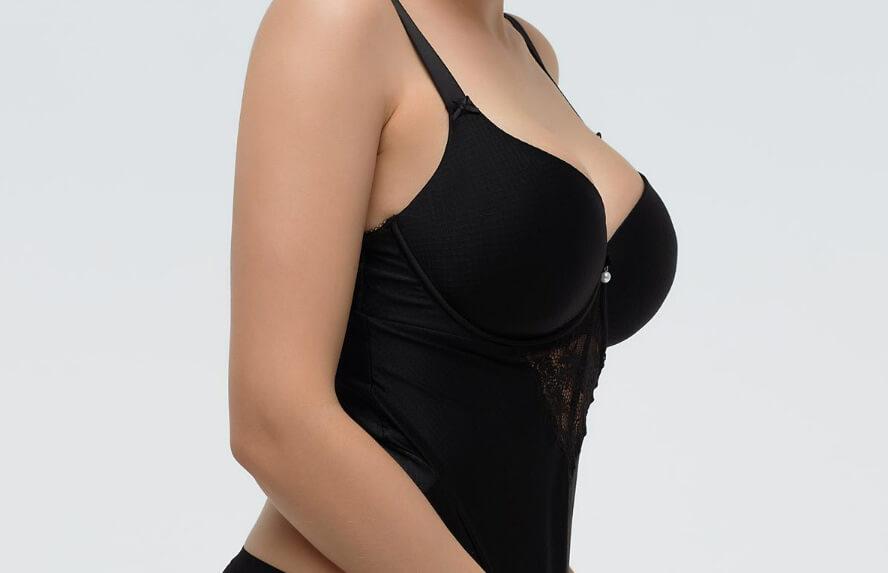Dreaming of beautifully enhanced breasts with a natural look and feel, without the drawbacks of traditional muscle placement? At Seattle Plastic Surgery, we offer Subfascial breast augmentation, which provides the perfect balance. By positioning your implant beneath the resilient yet flexible pectoral fascia (rather than deep under the muscle), this advanced technique delivers stunning, natural-looking results with minimal downtime and no workout-related distortion.
Understanding Subfascial Breast Augmentation
Subfascial breast augmentation is a cosmetic surgery technique in which the breast implant is positioned under the thin, fibrous covering of the pectoralis major muscle (the pectoral fascia) but above the muscle itself. This creates a pocket that combines some of the soft-tissue coverage of submuscular placement with the quicker recovery and natural “settle” of subglandular augmentation.

Subfascial vs. Other Implant Planes
Choosing the right pocket is about striking a balance between aesthetics, safety, and your lifestyle.
- Subglandular (over muscle) provides easy placement but leaves less tissue covering the implant and carries the highest risk of capsular contracture.
- Submuscular/Dual-plane offers maximum soft-tissue padding and the lowest rippling risk, yet gym-goers may notice “animation deformity”—implants that flex and shift with every chest workout.
- Subfascial sits above the muscle but beneath its protective fascia, delivering extra coverage without the movement-related drawbacks.
Benefits of the Subfascial Technique
Placing the implant under the fascia but over the muscle strikes a happy medium: you keep the muscle intact for comfort, yet still add an extra layer of coverage that pure “over-the-muscle” approaches lack. Here’s why many active, lean, or revision patients find it the best of both worlds:
- More natural upper-breast shape – The fascia covers the implant edge, so the transition from chest to breast looks smooth rather than “stuck on.”
- No workout wobble – Because the main chest muscle isn’t lifted, your implants stay put during push-ups, yoga flows, or weight-training.
- Quicker, gentler recovery – With the muscle untouched, most people feel less tightness and need fewer pain pills, getting back to normal routines sooner.
- Lower risk of hard scar tissue – Studies show the fascia pocket has a smaller chance of capsular contracture than true over-muscle placement.
- Extra padding for slim frames – Even if you have little natural breast tissue, the fascia adds a thin “blanket” that helps hide ripples or edges.
- Smart choice for revisions – Moving an implant from an uncomfortable under-muscle pocket to the fascia layer often fixes animation deformity or past scar problems.
Ideal Candidates
Not every anatomy or lifestyle demands a fascia-based pocket, but several profiles fit perfectly.
You may be ideal if:
- You are lean or highly athletic and want to avoid animation deformity during workouts.
- Your breast skin has at least 2 cm of pinch thickness, providing enough soft tissue for smooth contours.
- You have mild breast droop (ptosis) and want a subtle lift effect without a formal mastopexy.
- You’re seeking revision after capsular contracture or animation issues with a prior submuscular augmentation.
The Surgical Technique
The procedure takes place in an accredited operating room with either general anesthesia or light sedation, depending on what you and your surgeon decide is best. After the skin is carefully marked for symmetry, a small hidden incision provides access to the breast. The surgeon then lifts the thin fascia that covers the chest muscle just enough to create a snug pocket for the implant, leaving the muscle itself untouched. A sterile, no-touch method guides the implant into position, and the incision is closed in layers for a clean, secure seal. A supportive surgical bra is applied before you head home the same day with clear instructions for rest, medication, and follow-up care.

Recovery Timeline
Most patients spend the first one to two days taking it easy at home, walking only for short stretches and keeping arm movements below shoulder level. By the end of the first week, most are back at desk work and need little more than over-the-counter pain relievers. Light cardio can usually resume around weeks two to three, with gradually heavier upper-body workouts cleared at about four weeks. Swelling continues to fade over the next couple of months; by the three-month mark, you’ll see roughly 80 percent of your final shape, and subtle settling (“drop and fluff”) finishes by the end of the first year.
Results & Longevity
Because the pocket hugs the implant, patients see a soft upper slope from week one—no sharp ledge, no high-riding pectoral distortion. Studies following subfascial patients for up to 10 years report sustained shape and low revision rates. Still, normal aging continues; a supportive bra and stable weight prolong results.
Cost & Financing
The price of subfascial breast augmentation is determined by several variables—such as the surgeon’s time, implant style, anesthesia, facility overhead, and any add-on procedures like fat grafting or revision work—so it can differ from patient to patient. During your consultation, we provide a transparent, itemized quote that covers every stage of care, from pre-operative appointments to post-operative follow-ups. For those who prefer to pay over time, Seattle Plastic Surgery partners with reputable medical financing companies and offers in-house payment plans, making it easier to choose a schedule that fits your budget.
Schedule Your Consultation
The best way to decide between subfascial, dual-plane, or another approach is an in-office or virtual visit with our board-certified plastic surgeons. We’ll perform a 3-D Vectra® scan, let you “try on” different volumes, and design a surgical plan that matches your anatomy, lifestyle, and aesthetic goals. Call 206-339-3924 or click “Book Now” to reserve your spot on the surgery calendar.
FAQs
What does “subfascial” mean in breast augmentation?
It refers to placing the implant beneath the thin, fibrous covering of the pectoralis major muscle (the fascia) but above the muscle itself. This pocket offers extra tissue padding without cutting or lifting the muscle.
What are the cons of subfascial breast implants?
The fascia adds only a thin layer of coverage, so very lean patients may still see mild rippling. Because the implant sits closer to the skin than full submuscular placement, mammography may require special “implant-displacement” views, and long-term data are more limited than for traditional techniques.
What results can I expect from subfascial breast implants?
Most patients see a smooth upper-pole slope, minimal implant movement during exercise, and a quicker, less painful recovery compared with under-muscle surgery. Final settling (“drop and fluff”) is typically complete within 3–6 months.
What is “cold” subfascial breast augmentation?
“Cold” simply means the implants are kept on ice packs until insertion to reduce bacterial growth and capsular-contracture risk. The surgical pocket and placement plane are otherwise the same.
Which implant placement gives more cleavage?
Cleavage depends on implant width, volume, and how close the pockets are created. Subfascial and dual-plane placements often allow the surgeon to position implants slightly closer together than full submuscular pockets, which can enhance cleavage when anatomy permits.
Still Have Questions?
Give us a call at 206-324-1120. Chat by clicking the icon in the lower left hand corner of your screen additionally you can contact us by filling out the form above.


